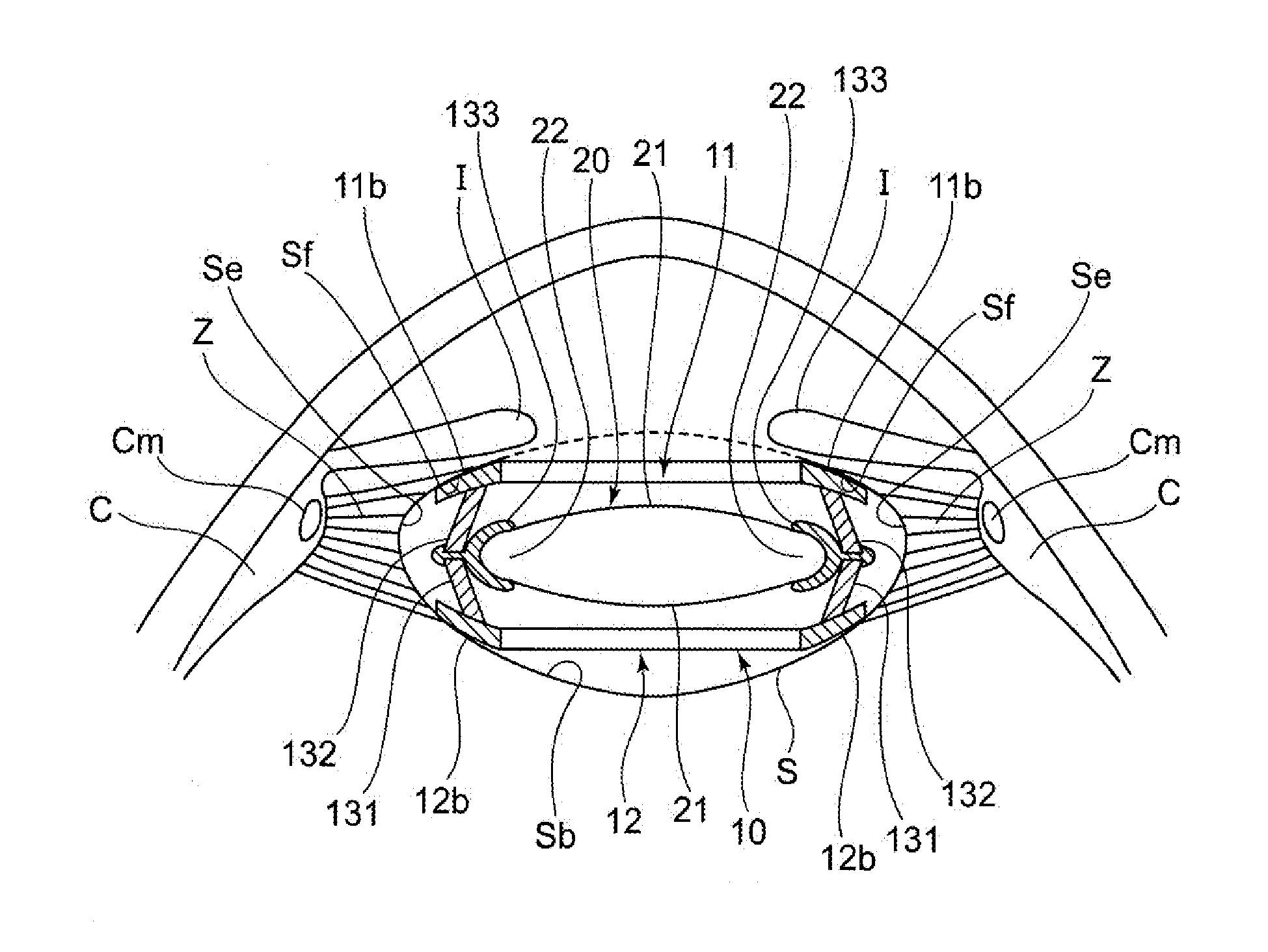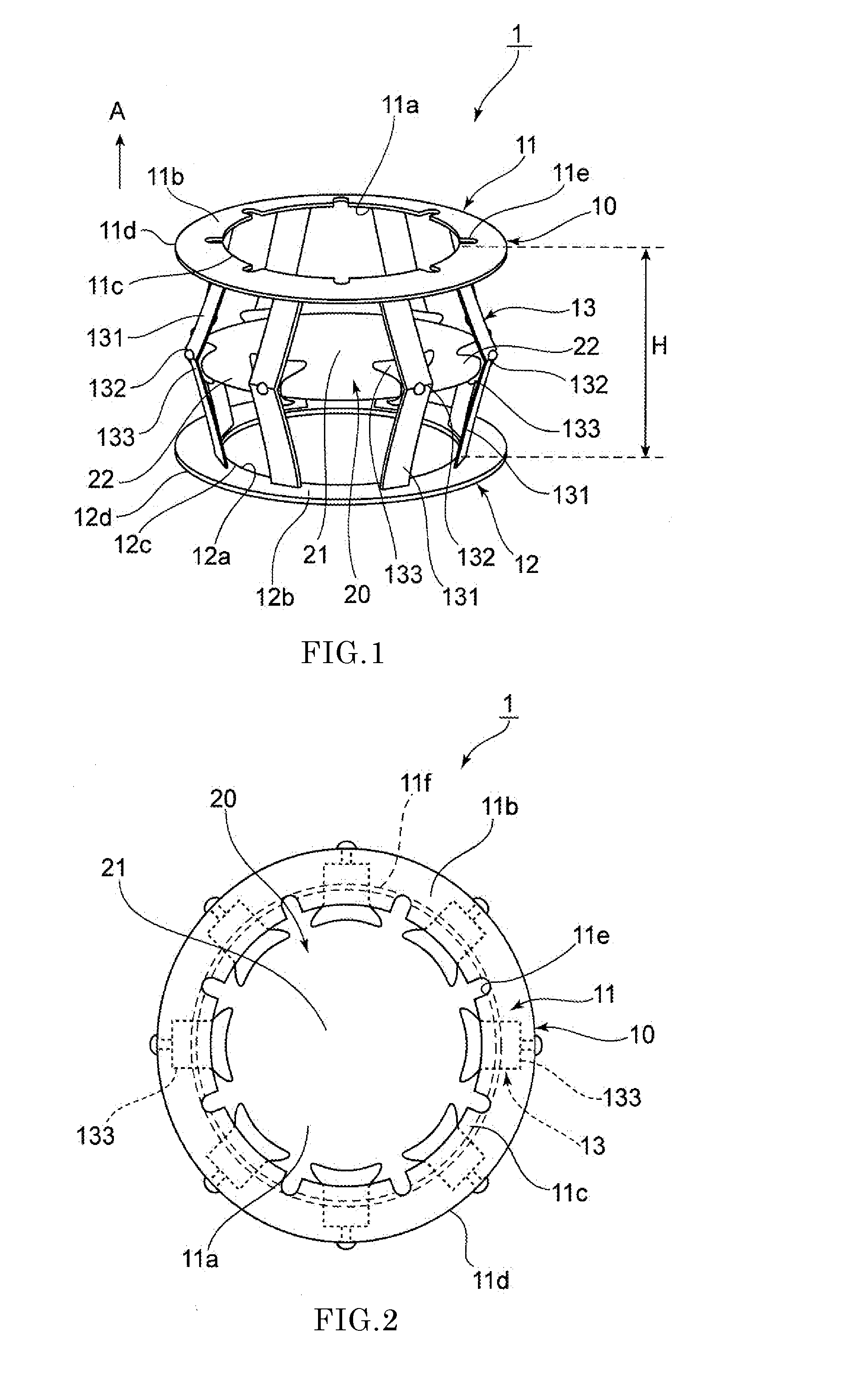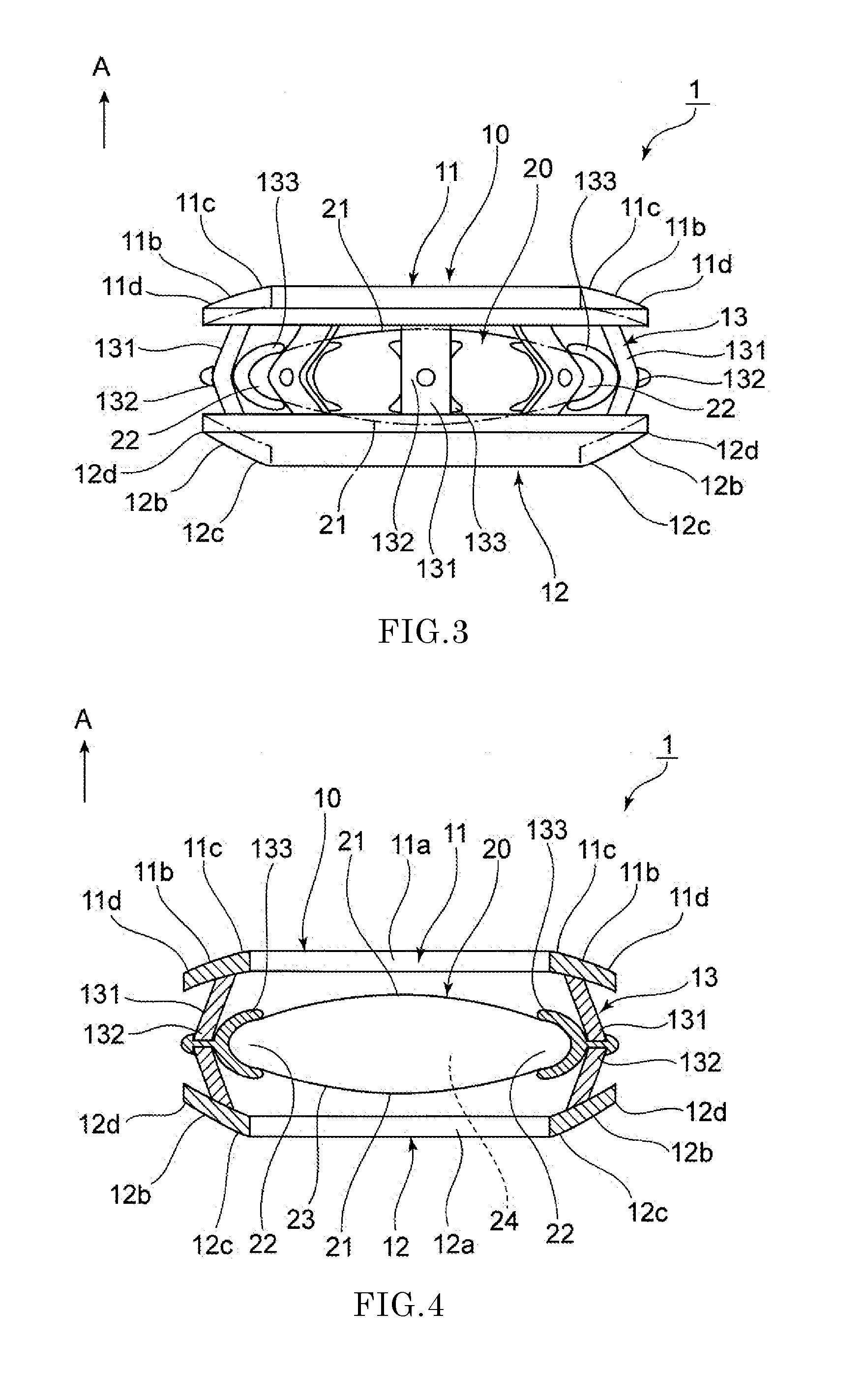Accommodating intraocular lens
- Summary
- Abstract
- Description
- Claims
- Application Information
AI Technical Summary
Benefits of technology
Problems solved by technology
Method used
Image
Examples
first embodiment
[0064]Next, a first embodiment of an accommodating intraocular lens according to the present invention will be described with reference to FIGS. 1 to 5.
[0065]An accommodating intraocular lens 1 includes a lens capsule expanding device (hereinafter referred to as a device 10) and an optical portion 20 disposed inside the device 10. In the following description, the direction indicated by arrow A illustrated in the drawings is defined as a front side and the opposite direction is defined as a rear side.
[Device Configuration]
[0066]As illustrated in FIG. 5, the device 10 is arranged in the lens capsule S of which the anterior capsule Sf is incised during ophthalmic surgeries such as an extracapsular extraction surgery performed as a part of a cataract surgery, a refractive correction surgery, or a presbyopia correction surgery. As illustrated in FIG. 1, the device 10 includes a front supporting portion 11 positioned on the front side in the lens capsule S, a rear supporting portion 12 p...
second embodiment
[0096]Next, a second embodiment of the accommodating intraocular lens 1 according to the present invention will be described with reference to FIG. 6. In the following description, only constituent elements different from those of the above-described embodiment will be described and the same constituent elements as those of the above-described embodiment will be denoted by the same reference numerals and the description thereof will be omitted.
[0097]In the device 10 according to the present embodiment, as illustrated in FIG. 6, the locking member 133 is not provided, and the circumferential portion 22 of the optical portion 20 is directly locked to the inner side of the connecting pieces 131.
[0098]Thus, as illustrated in FIG. 6 (a), during distance vision (non-focus accommodation), the front supporting portion 11 and the rear supporting portion 12 move in the direction closer to each other and the degree of expansion of the connecting portion 13 in the radially outward direction inc...
third embodiment
[0100]Next, a third embodiment of the accommodating intraocular lens 1 according to the present invention will be described with reference to FIG. 7.
[0101]As illustrated in FIG. 7, the locking member 133 according to the present embodiment has a bulging portion 133a which is formed on the inner side of a front end and a rear end.
[0102]Thus, as illustrated in FIG. 7 (a), during distance vision (non-focus accommodation), the front supporting portion 11 and the rear supporting portion 12 move in the direction closer to each other and the degree of expansion of the connecting portion 13 in the radially outward direction increases. As a result, the facing connecting pieces 131 move in the direction away from each other and the distance between the connecting pieces 131 increases. Therefore, the optical portion 20 does not receive force in the radially inward direction from the connecting pieces 131 of the connecting portion 13 and is relaxed up to the original shape whereby the curvature...
PUM
 Login to View More
Login to View More Abstract
Description
Claims
Application Information
 Login to View More
Login to View More - R&D
- Intellectual Property
- Life Sciences
- Materials
- Tech Scout
- Unparalleled Data Quality
- Higher Quality Content
- 60% Fewer Hallucinations
Browse by: Latest US Patents, China's latest patents, Technical Efficacy Thesaurus, Application Domain, Technology Topic, Popular Technical Reports.
© 2025 PatSnap. All rights reserved.Legal|Privacy policy|Modern Slavery Act Transparency Statement|Sitemap|About US| Contact US: help@patsnap.com



